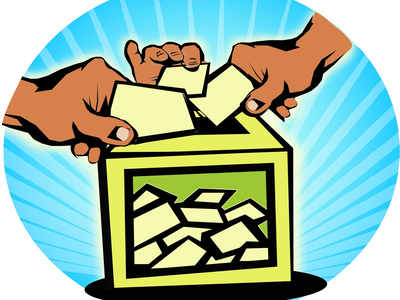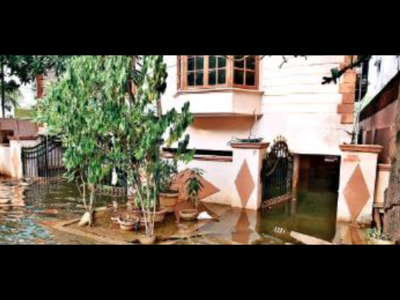The Times of India 02.06.2010
Urban voters hold key to Bengal civic poll scoreline
KOLKATA: Will the civic polls turn out to be a continuation of the “no-vote” to the Left? If so, how much will Trinamool Congress gain from it? Political thinktanks have stopped making predictions because neither party is confident about how urban voters would react to issues like municipal services, daily administration, and even state-level policy matters such as industrialization. What is clear, however, is that citizens, and not parties, have come to the fore after a long time in West Bengal.
The way the people’s will was stamped on the 2009 Lok Sabha poll scoreline was a lesson for the ruling Left Front. Even Trinamool did not expect such a big leap in spite of the Left downslide in the 2008 panchayat polls. Now, the civic polls will reflect the urban mind — a crucial element for the 2011 assembly elections.
What bothers parties is the less-than-usual polling in many areas of Kolkata and Salt Lake. Going by the thumb rule, low polling is indicative of status quo, an ebb in the change wave. But the rule doesn’t hold true for Bengal. Instances are not hard to find where high polling did not reflect genuine participation of voters. It only meant that the parties had manipulated the poll machinery to the hilt. In this year’s civic election, however, parties had more or less an equal presence around polling booths, so the manipulation trick didn’t work in most areas.
This has been a cause of worry for parties. Both sides mobilized polarized supporters, but have no clue about the floating voters. The educated middle class holds the key this time. The parameters are neither exclusively political, nor are they totally local. They are a mix of these two with change being the underlying theme. The question is about the degree of this will to change.
For, things are not the way in the civic polls as they were during the Lok Sabha election. Unlike in 2009, Congress and Trinamool Congress have fallen out, though temporarily. Voters have seen Mamata Banerjee as railway minister for an entire year (not so in mid-2009).
The civil society now stands sharply polarized unlike in 2008 and 2009. The Left can only hope that the scene won’t be as bad as in the 2009 Lok Sabha polls when it had a lead in only 22 of the 141 wards in Kolkata. It is almost certain that they won’t be able to retain the Kolkata corporation. In fact, the Left would have lost it in 2005 if outgoing mayor Subrata Mukherjee hadn’t dumped Trinamool at the last moment and allied with the Congress.
State Congress leaders, too, are not dreaming big. They are only praying that Trinamool gets less than 71 seats (majority) and is forced to depend on them to form the board. Trinamool leaders, however, believe they will get a clean majority in Kolkata and Salt Lake. They calculate that the Left downslide will continue till it reaches a culmination in the 2011 assembly polls.
The way the people’s will was stamped on the 2009 Lok Sabha poll scoreline was a lesson for the ruling Left Front. Even Trinamool did not expect such a big leap in spite of the Left downslide in the 2008 panchayat polls. Now, the civic polls will reflect the urban mind — a crucial element for the 2011 assembly elections.
What bothers parties is the less-than-usual polling in many areas of Kolkata and Salt Lake. Going by the thumb rule, low polling is indicative of status quo, an ebb in the change wave. But the rule doesn’t hold true for Bengal. Instances are not hard to find where high polling did not reflect genuine participation of voters. It only meant that the parties had manipulated the poll machinery to the hilt. In this year’s civic election, however, parties had more or less an equal presence around polling booths, so the manipulation trick didn’t work in most areas.
This has been a cause of worry for parties. Both sides mobilized polarized supporters, but have no clue about the floating voters. The educated middle class holds the key this time. The parameters are neither exclusively political, nor are they totally local. They are a mix of these two with change being the underlying theme. The question is about the degree of this will to change.
For, things are not the way in the civic polls as they were during the Lok Sabha election. Unlike in 2009, Congress and Trinamool Congress have fallen out, though temporarily. Voters have seen Mamata Banerjee as railway minister for an entire year (not so in mid-2009).
The civil society now stands sharply polarized unlike in 2008 and 2009. The Left can only hope that the scene won’t be as bad as in the 2009 Lok Sabha polls when it had a lead in only 22 of the 141 wards in Kolkata. It is almost certain that they won’t be able to retain the Kolkata corporation. In fact, the Left would have lost it in 2005 if outgoing mayor Subrata Mukherjee hadn’t dumped Trinamool at the last moment and allied with the Congress.
State Congress leaders, too, are not dreaming big. They are only praying that Trinamool gets less than 71 seats (majority) and is forced to depend on them to form the board. Trinamool leaders, however, believe they will get a clean majority in Kolkata and Salt Lake. They calculate that the Left downslide will continue till it reaches a culmination in the 2011 assembly polls.


